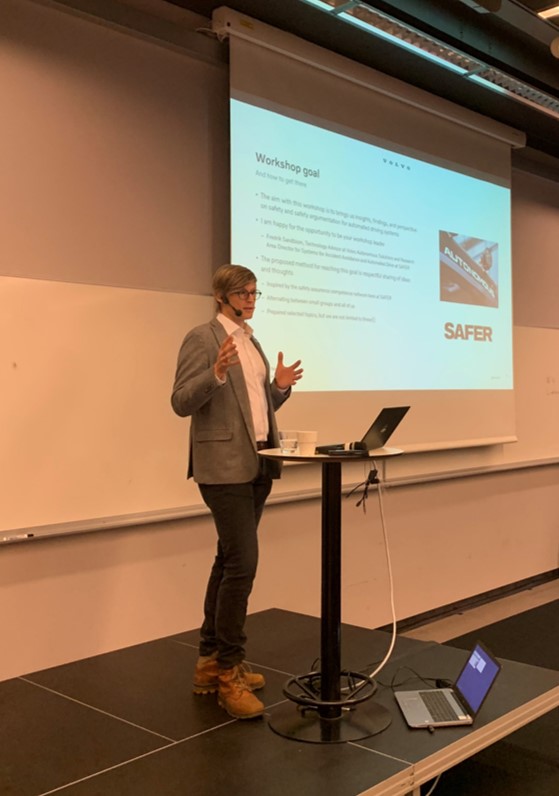Focus for this year’s edition of the Scandinavian Conference on System and Software Safety: Safety argumentation – what makes an automated transport system defined safe?
Over 130 experts from almost 50 different companies and organisations gathered at Lindholmen Science Park in Gothenburg for two days to take part in SCSSS 2021 and learn about the latest trends and developments in system safety research.
The conference aimed to inspire, grow knowledge and increase networking through gathering experts from both industry and university to discuss techniques and methods for developing complex and safety regulated software-based systems.
“We are very pleased with hosting the conference”, says Malin Levin, SAFER’s representative in the organisation committee.
“The question of how we can ensure that self-driving vehicles are safe and really contribute to a sustainable transport system is an extremely important issue for our research community and we see great opportunities to connect to these expertise even more”.
A lot of interesting research and development is currently ongoing in this field in order to create methods for process improvements, assessments and standardization of safety critical software and systems. Sven E Hammarberg, BVR, gave a much appreciated key note speech about the validation and certification process for BOEING 737 MAX. In this summary we learned more about the 737 MAX background and the causes of the two fatal accidents. Sven presented how impaired supervision, overlooked safety assessments and a few lines of code resulted in disaster. The program contained many presentations strongly connected to traffic safety research. SAFER’s competence networks hosted workshops during the second day, that was very well-attended with fruitful discussions.
What constitutes a safety target?
Automation affects everyone and the potential social benefits with self-driving vehicles are huge, partly through increased traffic safety. But what happens when you implement a new technology where all the possible problems that can occur during usage are not yet known? How do you set up your research and development then, and what can you learn from other areas? These critical questions were discussed in a workshop hosted by Fredrik Sandblom, SAFER’s competence network leader for Safety assurance. The workshop addressed the new issues and malfunctions that can occur in AD level 3 and4. The participants discussed what constitutes a safety target and what it means to be safe. What properties should a safety target have, e.g. moral, useful, reachable, explicit etc? Also, the question if safety targets should be public and who should set them, were also discussed in the workshop.
The safety culture – a key to successful safety work
Per Johannessen, SAFER’s competence network leader for System safety hosted a workshop about safety culture. The workshop dived into how safety cultures for different roles affect operational safety. Roles includes product developers, line managers, project managers, drivers, operators and other users such as traffic participants. The discussion primarily covered road vehicles, both off and on road, and the group looked into how safety cultures can be improved for the different roles within organisations
The conference was organized by Addalot, ICES (KTH) and SAFER. The next edition of the conference will preliminary be arranged in Stockholm, November 22-23, 2022. Save the date!

